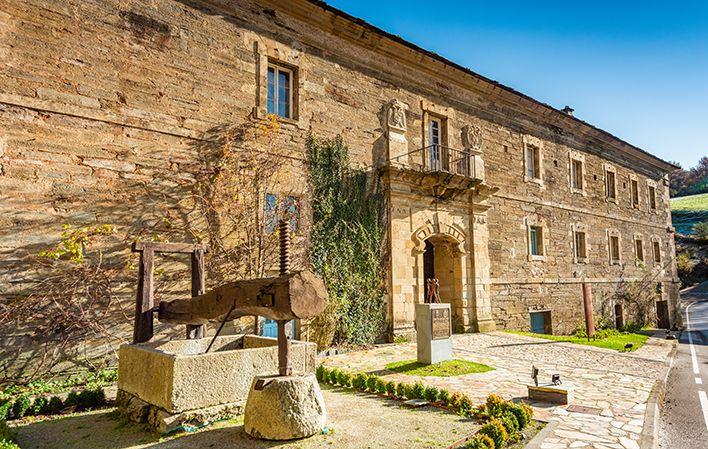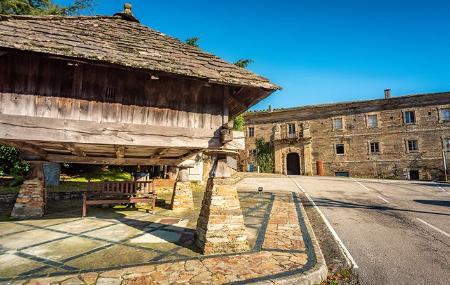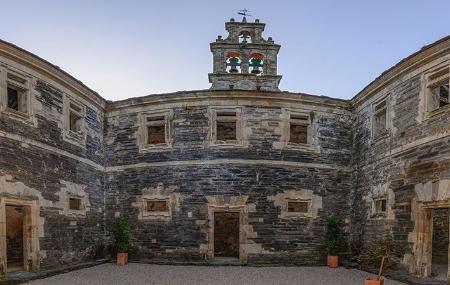
Monastery of Santa María of Villanueva de Oscos
- Title Villanueva de Oscos Western Asturias
- Address Address: ■ 33776 - Vilanova
- Phone Phone: 985 626 219 (reservas)
Info
The monastery of Santa María was for centuries the organisational centre of the agrarian and economic space of this area of western Asturias. It was founded in 1137 by King Alfonso VII and his wife Berenguela, as a monastery of Benedictine monks, although it was later occupied by the Cistercians.
All its assets became civil property after the confiscation of Mendizábal, except for the church, which was converted into a parish church. The monastic buildings were sold and converted into private homes, with the exception of the cloister, which remains in a state of ruin.
Of the primitive Romanesque building, only the church remains, which has a 12th-century monastic-type layout: three naves with the central one protruding in height, covered with a wooden roof and a triple apse chevet, where barrel vaults and quarter sphere vaults are used. The interior is notable for its sobriety and decorative austerity. The five-bay naves are separated by pointed arches supported by cross-shaped pillars. The only outstanding decorative motif is the tomb of Juan Álvarez Osorio, placed in the presbytery and protected by an arch, corbels and cornice, decorated with symbolic funerary references.
The most recent building is the monastery, dating from the 17th and 18th centuries, whose construction is attributed to the master builder of the cathedral of Santiago de Compostela, Domingo Lois Monteagudo. The building is attached to the south side of the church and is of grandiose proportions with austere and severe architecture. The interior is accessed through a beautiful doorway, formed by an original arch with voussoirs set between two pilasters that extend into the cornice. Above the doorway is an outstanding balcony without a parapet, surrounded by the coats of arms of Spain and the Cistercian Order. The entire façade is made of slate ashlars and the roof of slate slabs, the dominant material in western Asturias.



